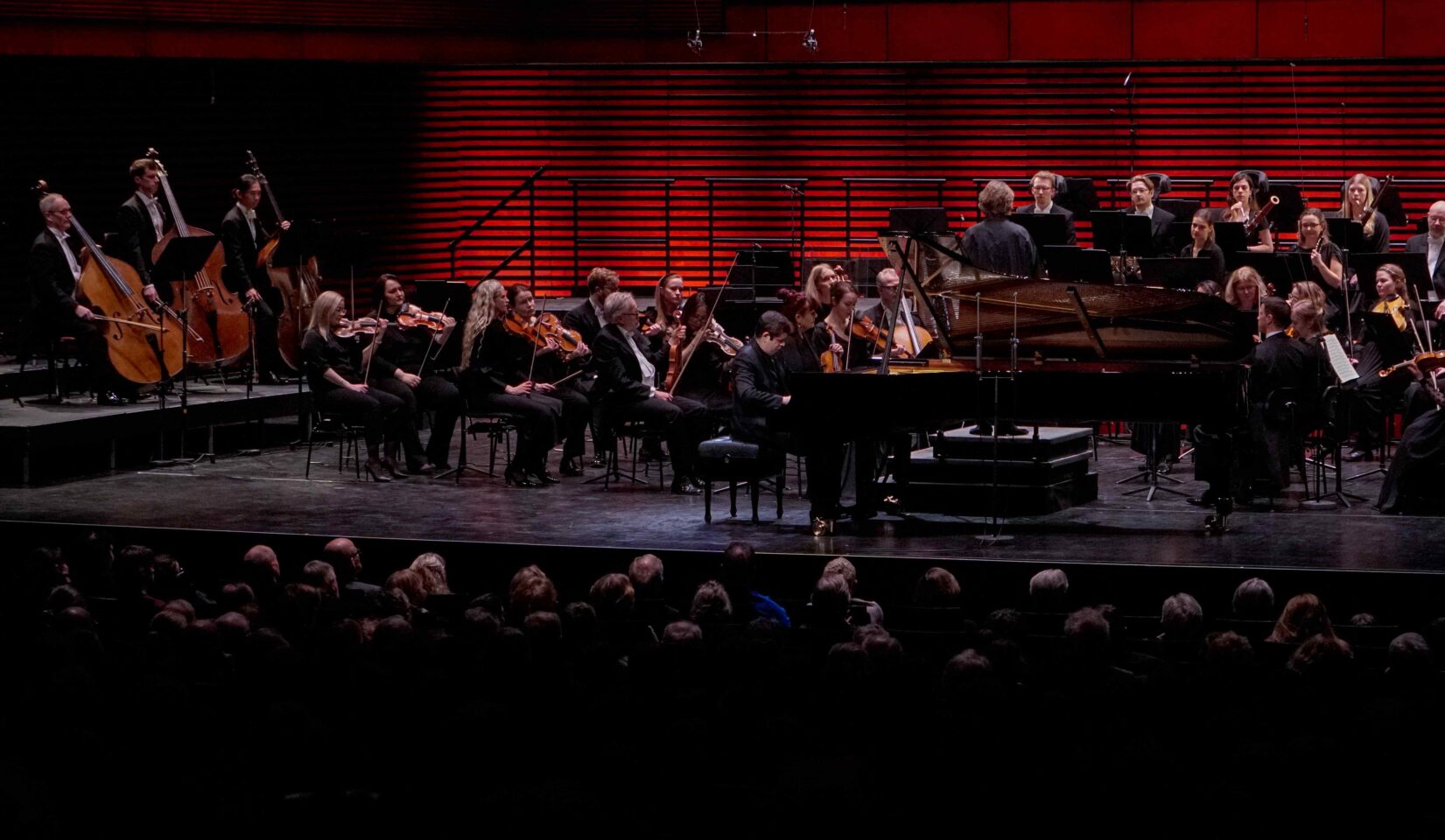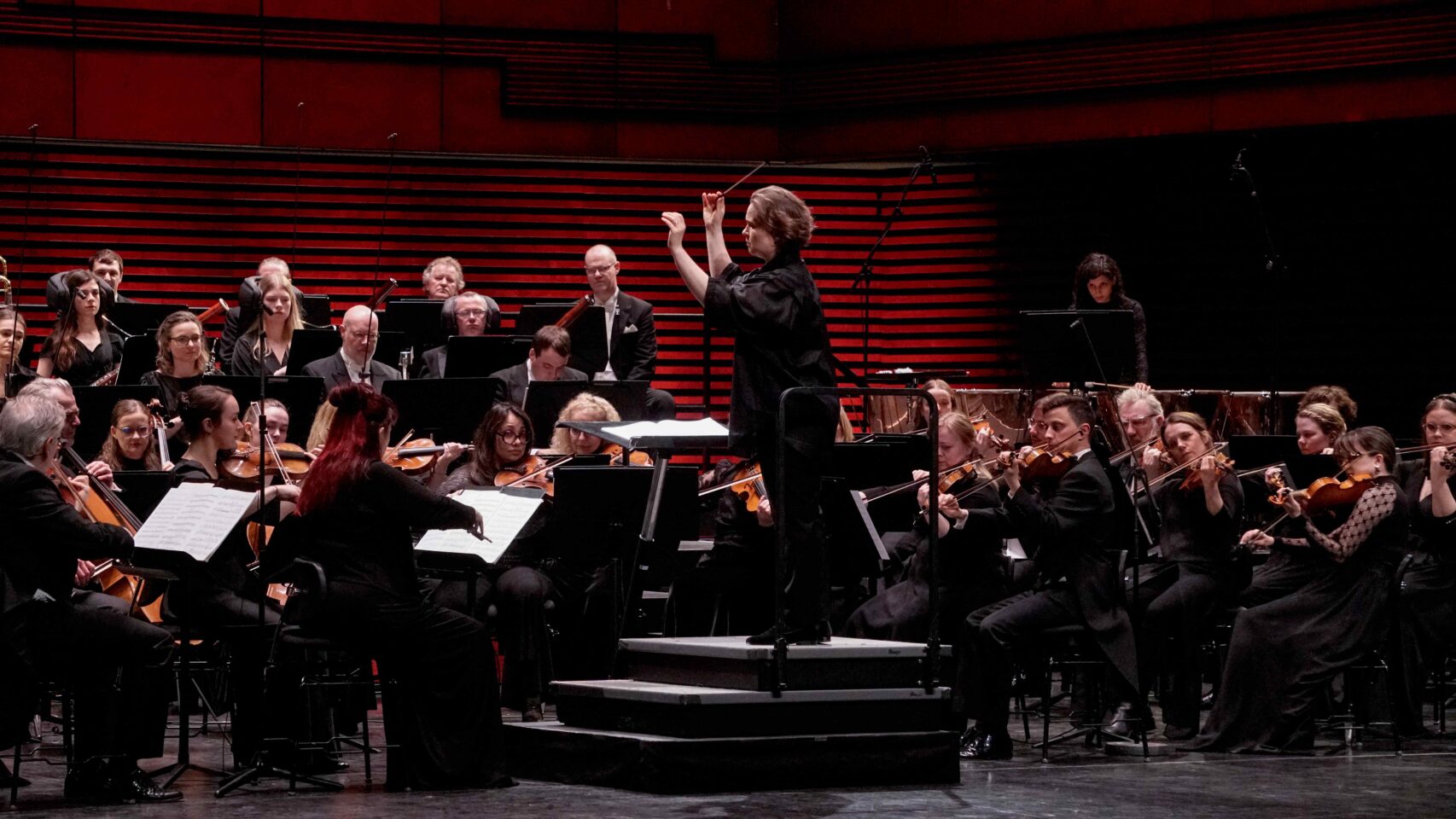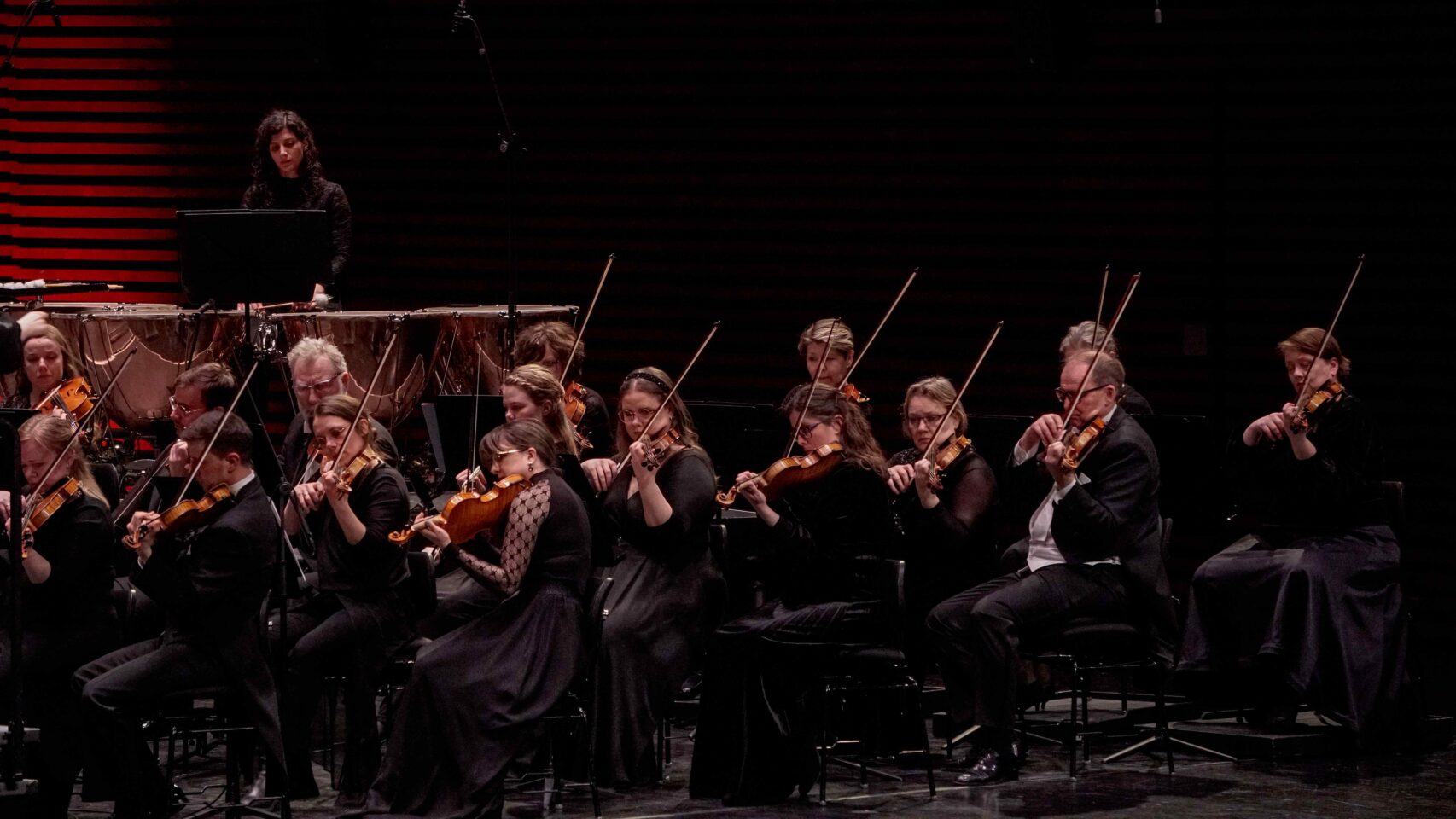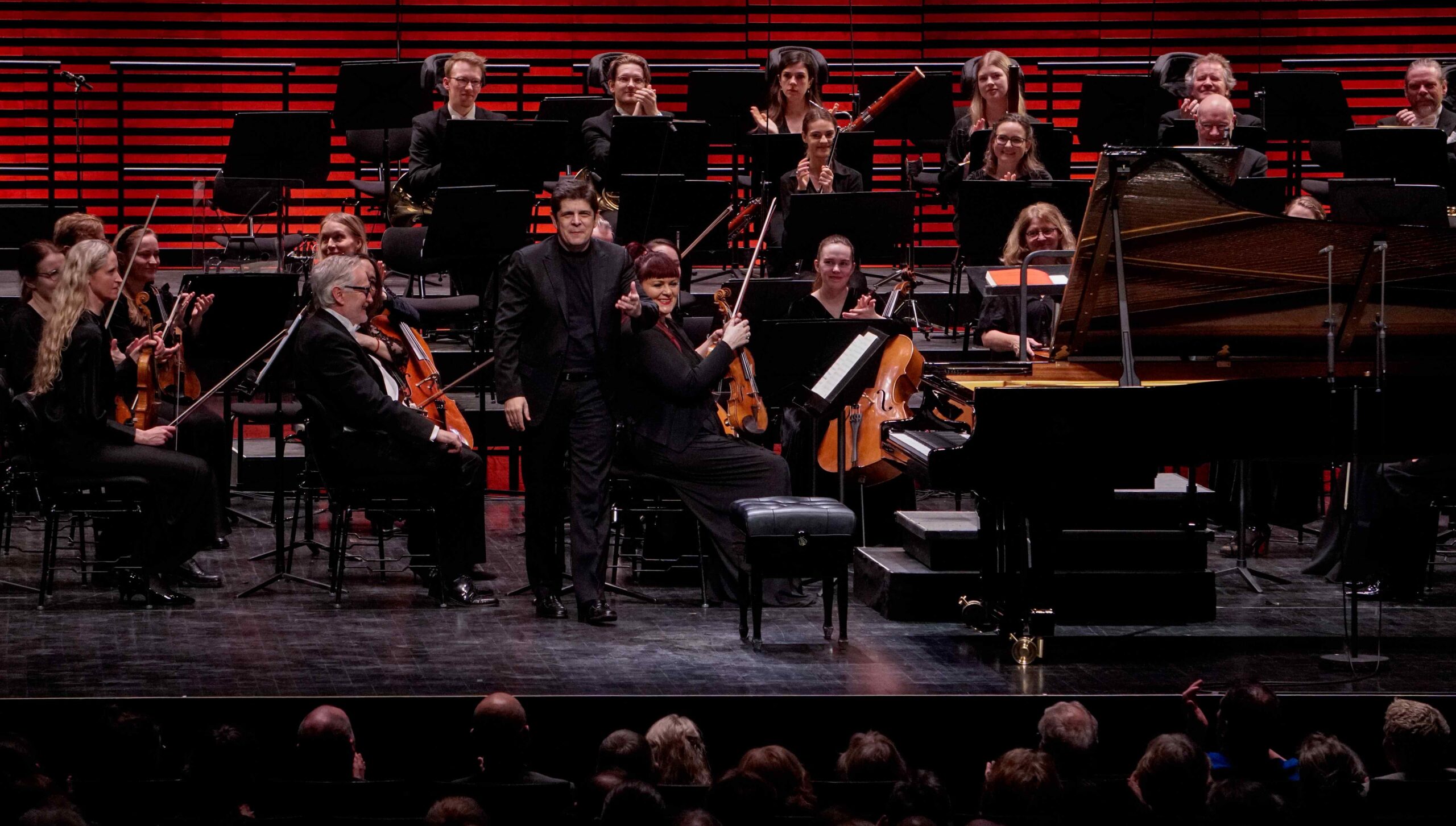In this bicentennial year of Bruckner’s birth, major orchestras worldwide pay quite a significant tribute to the Master of Saint Florian, still too often overshadowed by his supposed successors, whose time has long arrived; one thinks of Mahler. This year presents the ideal opportunity for this Brucknerian wanderer, your humble servant, to traverse Europe in search of the finest ensembles, from those most seasoned in this repertoire to the least expected. On tonight’s program: Mozart’s Piano Concerto No. 20, undoubtedly one of his weightiest and profoundest, followed by Bruckner’s final symphony, a massive granite structure of unfathomable depth and mystery. These two works are united by a common key, that of D minor, the key of Mozart’s Requiem. In the heart of the magnificent Eldborg Hall in Reykjavik, the evening yielded mixed impressions, offering food for thought.

A somewhat affected Piano Concerto No. 20
The genesis of this concerto falls within a period where Mozart, having been in Vienna for three years, faced a decline in opera commissions. In order to maintain his status and income, he organized a subscription concert on February 11, 1785. The preparation of this work was so rushed that Mozart himself could not rehearse the final part of the concerto with the orchestra, having finished it only the day before the performance. This situation speaks to Mozart’s incredible improvisational ability and musical genius. Javier Perianes, accompanied by the Iceland Symphony Orchestra under the direction of Finnish conductor Eva Ollikainen, undertakes the challenge of interpreting this masterpiece with a rather mixed approach, ranging from the best (the final movement, narrative and fervent) to the more questionable. Hailing from Andalusia, Javier Perianes is recognized as one of the most gifted pianists of his generation. An expert in renowned Iberian works by composers such as Falla, Granados, and Albéniz, he also explores the repertoire of lesser-known composers, such as Federico Mompou or Manuel Blasco de Nebra, to whom he dedicated an album released by Harmonia Mundi. Mozart is not necessarily his core repertoire. Perianes’ entry into the first movement demonstrates undeniable technical mastery, but it’s an interpretation where precision sometimes seems to take precedence over passion. The trills, executed with particular zeal, occasionally appear to interrupt the natural flow of the music. It is in the slow movement that Perianes finds a terrain more suited to his thoughtful approach. His performance here is more nuanced, light, playful, evoking something of Haydn’s amiability. The orchestra, very refined and precise, knows how to accompany with beautiful shimmering nuances. The pianist doesn’t just focus on his playing: he often watches the orchestra, attentive, eager to create a beautiful ensemble. This elegance, typical of Perianes, is highly appreciated, and indeed, the orchestra creates a real sense of camaraderie in this dreamy, soft, sometimes ethereal passage. The final movement, very tempestuous, allows for abrupt contrasts, in a virtuosic outpouring, sidelining the emotion and poetic delicacy that Maria João Pires manages to infuse. But Perianes is an orator and storyteller, especially in this movement: from a narrative perspective, I would even say from a pianistic dramaturgy (echoes of operas are certainly there), it’s exhilarating: at no point does the soloist let go, it’s a highlight of the evening.

An epic and modern Bruckner’s Ninth Symphony
In the realm of classical music, the interpretation of a symphonic work is a true act of creation, where the conductor, like a painter before a blank canvas, reinvents the work through the prism of their sensitivity and vision. Aware that his Ninth Symphony would be his ultimate work, Bruckner aspired to a majestic composition and deliberately chose the key of D minor, echoing Beethoven’s daunting Ninth. Between 1891 and 1894, he completed the first three movements, once again placing the Scherzo before the Adagio, before devoting nearly two years to a Finale that would remain unfinished. These three movements were not premiered until 1903, seven years after his death, in a version modified by Ferdinand Löwe. The true rediscovery of the Ninth in 1932 marked the beginning of the revival of Bruckner’s work and the establishment of a first critical edition. The Ninth, dedicated “to dear God” (“dem lieben Gott”), stands out as a pinnacle of human and musical expression, revealing Bruckner’s boldest and deepest visions as well as an attempt to offer a synthesis of his symphonic art. With audacity characteristic of him until the end, the symphony navigates at the borders of the unknown.
The first movement, of unprecedented magnitude and power in Bruckner’s oeuvre, evokes a descent into the Underworld with its stark fifths, foreshadowing Liszt’s Dante Symphony coda. Eva Ollikainen initially manages to balance the sections, sculpting the sonic material with very broad gestures, sometimes recalling Australian conductor Simone Young, a specialist in Bruckner. Ollikainen offers a discourse marked by a dynamism, a motoricity unburdened by sentiment, hence neither “Feierlich” nor “misterioso” as indicated in the score, but rather epic, narrative—recalling what a film composer like Howard Shore owes to this movement for his Lord of the Rings score. It’s powerful but sometimes overly brash, too brass-heavy, reminiscent of Solti’s martial discourse with the Chicago Symphony Orchestra. The coda showcases consistently energetic and alert conducting, definitively favoring the brass (particularly convincing trumpets), at the expense of the winds, and with some oversights on the more meditative passages of the movement; this is where the weakness lies. By leaning towards a telluric and epic vision, we miss the metaphysical meditation on death and transfiguration that this symphony should evoke. For that, one must turn to the impassioned and deeply informed interpretations of Gunter Wand and Giulini, unrivaled practitioners of this music, constantly probing this score until their final concerts.

The Scherzo, with its apocalyptic hammering, presages the intensity of Stravinsky’s Rite of Spring or even the radical violence of Prokofiev’s Scythian Suite, and is an inheritance from Wagner’s descent into Nibelheim. In this modernist perspective, Eva Ollikainen makes a strong impression, despite some clarinet inaccuracies. But once again, the discourse quickly becomes too loud due to a lack of clear perception of the different sonic planes. It’s impressive but too uniformly epic.
The Adagio, with its striking beauty, approaches the avant-garde harmony of Schoenberg and anticipates Mahler’s Ninth. Unlike Bruckner’s previous Adagios that culminated in apotheoses and striking codas, this one plunges us into terror faced with Death before transporting us to the serenity of the beyond. Ollikainen doesn’t take enough time here, and the discourse sometimes seems erratic and hesitant. It becomes significantly more convincing in the second part, where breadth and lyricism seem to be more highlighted. But what remains of Bruckner’s anguished questioning in this unfinishable work that was meant to usher us into a new musical world, only sketched? The Iceland Symphony Orchestra presents an epic and modern vision, undeniably narrative, in Technicolor—a sort of quest for Tolkien’s rings of power—but perhaps too straightforward, far from the metaphysical depths that this work should lead us into. The final calm is welcome, and the conductor tries to impose a respectful silence, interrupted by impatient applause, quickly hushed by a few extra seconds of silence, but this contemplation lacks the emotion and depth of legendary silences by a Blomstedt.
This interpretation of Bruckner’s Ninth Symphony by the Iceland Symphony Orchestra under Eva Ollikainen’s baton, although not always reaching the spiritual and emotional heights hoped for, represents a honorable and thoughtful attempt at engaging with the Austrian composer’s work. Even if the path taken did not always lead to the expected summits, it’s the journey itself that enriches, questions, and ultimately contributes to the perpetual rediscovery of one of the most beautiful unfinished symphonies in the history of music.
Philippe Rosset
March 21, 2024


